Oct
31
2009
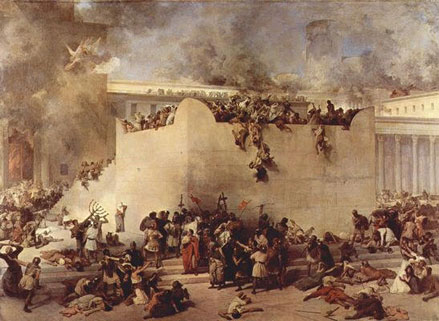
Another thought on the contrast between Israel’s history of bloodshed and the church’s history of being shed blood: it revolves around death and resurrection. Israel was the four cornered Bronze Altar, and that saw lots of bodies on it. It was near the gate guarded by priests with swords. That Israel was slain and restored but without an earthly king or army. Continue reading
Comments Off | tags: Tabernacle, Zechariah | posted in The Last Days, The Restoration Era
Sep
16
2009
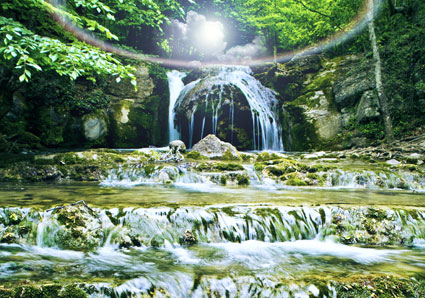
or Why Four Horsemen but Seven Seals?
“…the Egyptians are men, and not God; And their horses are flesh, and not spirit.” Isaiah 31:3
One of the three laws for Israelite kings was a command against multiplying horses and chariots—especially Egyptian ones. Solomon’s horse trading was, for a nation with a miraculous escape ON FOOT, in the eyes of the Lord, just like the faithless behaviour of the Hebrews in the wilderness. It’s always better to dwell in a tent with God than in a palace with the devil. Solomon’s kingdom of chariots and oppression became a new Egypt. By the end of the era, the pigs ruled the farm.
Continue reading
Comments Off | tags: Chariots, David, Egypt, Four Horsemen, Isaiah, Lampstand, Psalms, Solomon, Zechariah | posted in Biblical Theology, The Last Days, The Restoration Era
Aug
22
2009
or Silence of the Lamb
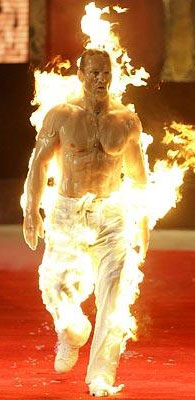
“And when he had spoken such words unto me, I set my face toward the ground, and I became dumb.” Daniel 10:15
NOTE: THIS POST HAS BEEN REMIXED AND INCLUDED IN GOD’S KITCHEN.
The Dominion pattern always begins with a Word from God. The one He speaks to then goes through a symbolic “Passover” death-and-resurrection. The new prophet is then “raised” to his feet (Firstfruits) and given a task. Filled with God’s Word, he opens it to the intended audience (Pentecost).[1]
Continue reading
Comments Off | tags: Bible Matrix, Egypt, Feasts, John the Baptist, Passover, Revelation, Zechariah | posted in Biblical Theology
Jul
27
2009
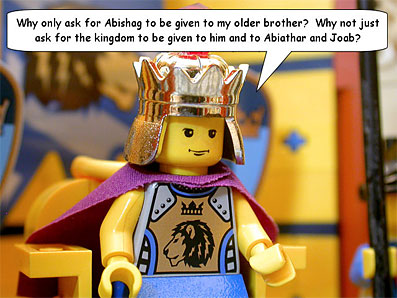
Eli’s corrupt priesthood came to an end when the Ark was taken by the Philistines. Saul’s corrupt kingdom came to a full end when the Ark returned (hence Michal’s barrenness). The last of Eli’s priesthood (Abiathar) was exiled when Solomon’s government began. Solomon’s kingdom was a new firmament (1 Kings 10:19). Isaiah, however, saw it being rolled up like a scroll (Is. 34:4).
Continue reading
Comments Off | tags: Abiathar, AD70, Ark of the Covenant, Caiaphas, Cyrus, David, Eli, Feasts, High Priest, Literary Structure, Saul, Solomon, Systematic typology, Zechariah | posted in Biblical Theology, The Last Days
May
20
2009
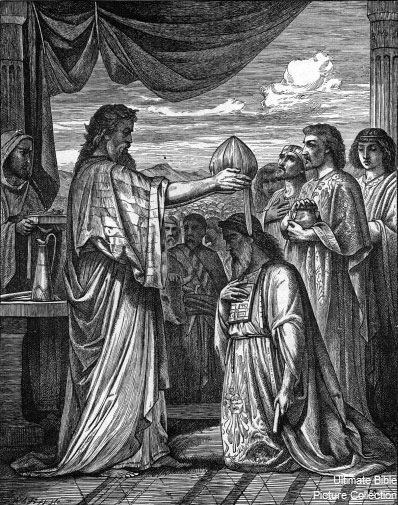
Leaving Wilderness Behind
In Through New Eyes, James Jordan notes that the wilderness was Havilah, the place mentioned in Genesis 2 that was rich in raw materials. Israel stripped Egypt of her gold, then plundered the desolate places of hidden wealth. She came out of the desert with a High Priest clothed in gems, and a new generation of soldiers born of God’s threshing floor.
The manna began to fall just after the Hebrews’ victory over Pharaoh. As with Jacob, the Lord was faithful to provide for His chosen one. But perhaps, in covering the ground, there is also the idea of a firmament (this might sound strange to some readers, but I have found the concept is a frequent one). The wilderness is the place of the humble bread of priesthood, displayed in obedience to God. It was the next generation that would drink the wine of Canaan after obedience under Joshua.
A Memorial
The Lord commanded that some manna be put into the Ark as a memorial. Symbolising manna, the white stone is a memorial of faithful priesthood. Joshua’s crossing of the Jordan was memorialised by large, engraved, white stones.
Continue reading
Comments Off | tags: Ark of the Covenant, Atonement, bdellium, Cain, Crucifixion, Ezekiel, Haman, Havilah, Herod, High Priest, James Jordan, Table of Showbread, Talmud, Urim and Thummim, White stone, Zechariah | posted in Biblical Theology, The Last Days
May
17
2009
Furnishing the New House
Zechariah’s night visions move God’s furniture around. As we saw, the instructions for the Tabernacle furniture align it with the Creation Week. And the Creation Week corresponds with the seven Feasts. Zechariah’s visions follow the Creation and Feast patterns, but the Tabernacle furniture has been shifted around all over the place.
Now, you will probably ask how eight visions can align with seven days or seven feasts. The answer is that it takes the two visions in chapter 5 to reflect the Day of Atonement. Thus:
Continue reading
1 comment | tags: bdellium, Lampstand, Manna, Meredith Kline, Revelation, White stone, Zechariah | posted in Biblical Theology, The Last Days
May
14
2009
Why do we put one-eyed, colour-blind pencil pushers in charge of the kaleidoscope?
The white stone mentioned in Revelation 2:17 was always a mystery to me. There are plenty of commentators who make lame suggestions as to its meaning (they sound a bit like a student making up answers during an exam!), but James Jordan got me thinking about it along the lines of its subtle use in the Old Testament. I intend to cover this in a few posts, and consequently may ramble even a little more than usual, but everything is connected in the Bible’s symbol language. This is a bit of a journey, but I am sure we will find it rewarding. Oh, and you will need to switch off your modernistic mind and use your imagination. You know, that thing you only use when you read or watch fiction? You can use it to understand the Bible as well. I know, scholars most often don’t. To cover their inability to make much sense of texts such as the one we are about to inhale, they pretend the writings are a bit primitive. Why do we put one-eyed, colour-blind pencil pushers in charge of the kaleidoscope?
Continue reading
7 comments | tags: High Priest, James Jordan, Modernism, Satan, Tabernacle, Typology, White stone, Zechariah | posted in Biblical Theology, The Restoration Era
May
12
2009
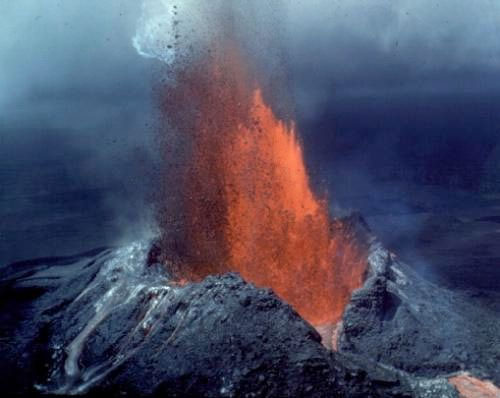
“And in that day His feet will stand on the Mount of Olives, which faces Jerusalem on the east. And the Mount of Olives shall be split in two, from east to west, making a very large valley; Half of the mountain shall move toward the north and half of it toward the south.” Zechariah 14:4
Surprising as His ways are, the Lord always follows procedure. Like Ahasuerus in the book of Esther, anything that is done is done by decree. Although, in the case of Ahasuerus, he needed to consult his elders, whereas God only consults his maturing elders (like Abraham and David–and now the church) to bring us to greater maturity.
A decree is written in the Most Holy, the king’s garden court (head). The elders in the Holy Place respond with liturgy (body). And then they ride out into the world on the swiftest horses to incite a Holy War that divides the world to bring about a New Creation.
Continue reading
Comments Off | tags: AD70, Ahasuerus, David, Esther, Greek philosophy, Liturgy, Numbers 5, Remnant, Restoration, Solomon, Temple, Zechariah | posted in Biblical Theology, The Last Days, The Restoration Era
May
3
2009
I just noticed that the passage concerning the slain Lamb (Rev. 5) and the passage concerning the victory of the church (in 9-11) correspond chiastically.
The first is the Adam conquering Herod’s Egypt and moving out through a bloody door (Passover/Circumcision)
SCROLL: Word – Most Holy Place – Garden
……LAMB: Sacrament – Holy Place – Land
…………NATIONS: Government – Courts – World
These cover the three territories corrupted by Adam, Cain and the ‘sons of God’. Between this ‘first generation’ (head) and the ‘next generation’ (body), there is a battle in the first century ‘wilderness’.
………………WILDERNESS BATTLE: Gospel as Pentecost Law
Later, there is the redeemed Eve conquering Herod’s Jericho and crossing the river into a heavenly country over the corpse (Atonement/Baptism)
…………SUNRISE ARMY of 200 million Jew/Gentile saints:
…………Government – Courts - World
……CHRIST the true brother/High Priest with the little scroll:
……Sacrament – Holy Place - Land (and Sea)
TWO WITNESSES, saints as the Ark cherubim: Word – Most Holy Place - Garden
Not only does this pattern follow the seven feasts of Leviticus 23 (if we include the central wilderness), each of these seven points contains the same sevenfold structure within itself. It is like Zechariah’s Lampstand with 49 lights. And this is just another overlay on the already manifold structures in Revelation. There really is no bottom to this book.
Comments Off | tags: Atonement, Baptism, Cain, Chiasm, Circumcision, Herod, Literary Structure, Passover, Revelation, Zechariah | posted in Biblical Theology, The Last Days
Apr
15
2009
Boisterous with Wine
Bread and wine administered separate from a meal and in meagre doses portrays God as stingy. Besides this fact, the Biblical image of abundant wine as liquid fire is important for war. Peter Leithart, commenting on Zechariah 9:15, writes:
Continue reading
Comments Off | tags: Communion, Holy war, Peter Leithart, Zechariah | posted in Biblical Theology































